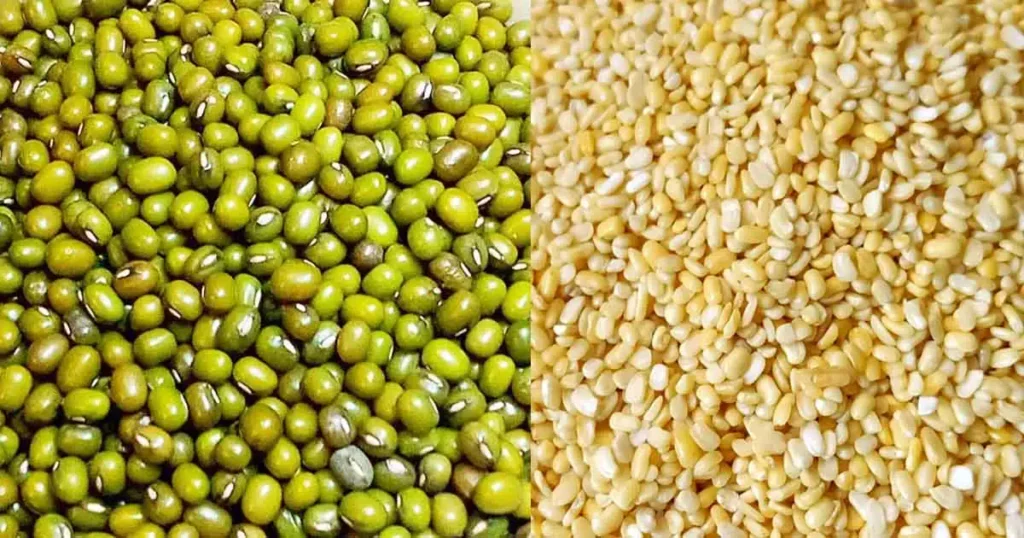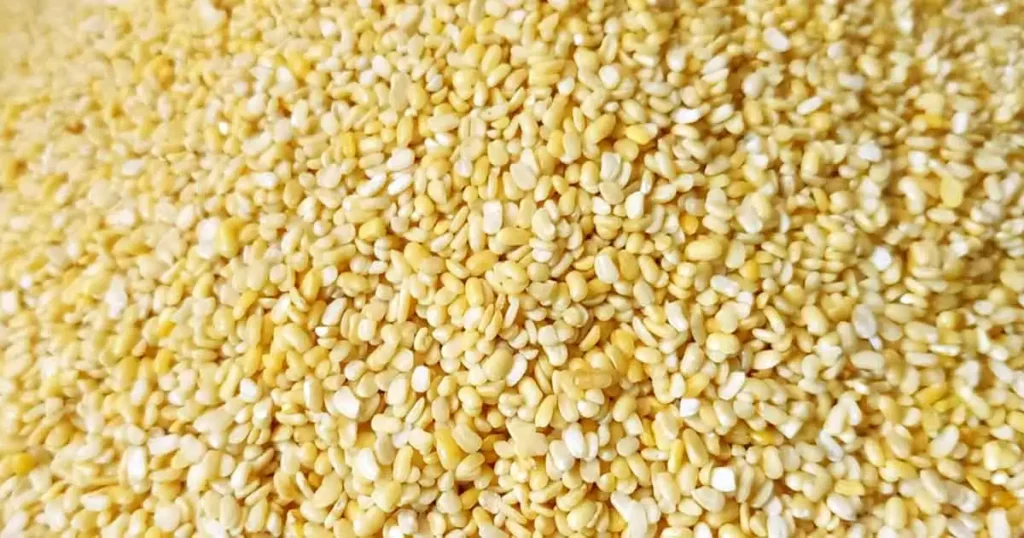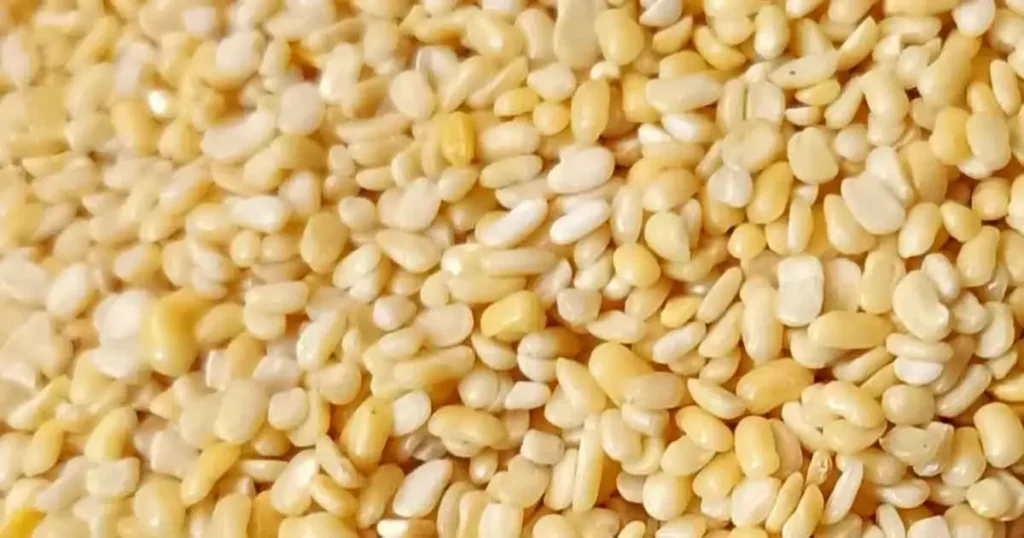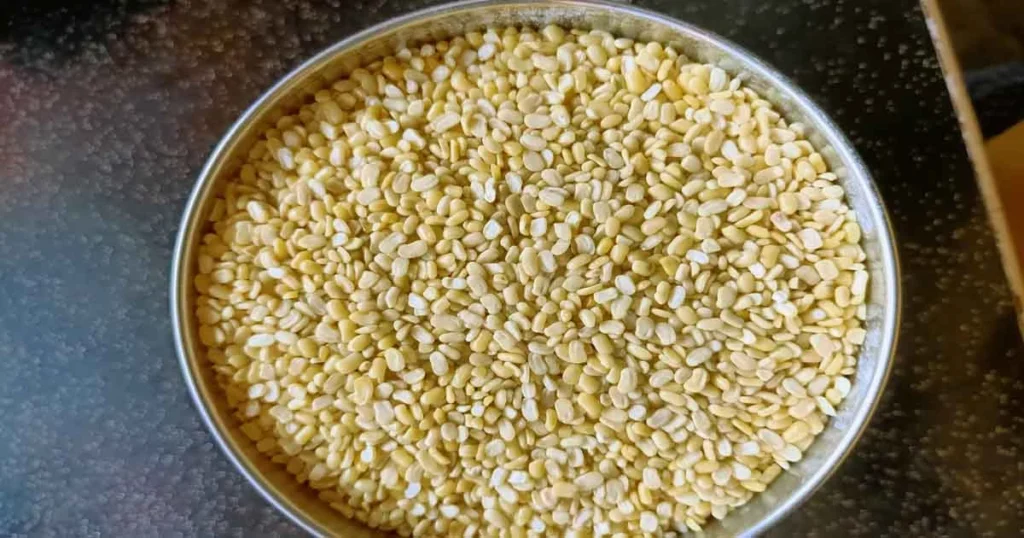From the below article, you will learn all the information about Moong dal, like – Moong dal in Tamil, its nutritional value, benefits, local recipes, categories, availability, supply, and many more.
Mung bean is a fantastic source of vitamins, bioactive compounds, and protein. In the Indian market, mung bean is commonly known as moong dal. It is one of the well-known edible crops for Indian people.
Many southeast Asian countries and Asian countries like India, Bangladesh, Pakistan, and China are consumed and cultivate moong dal frequently. You can find the crop in warmer parts of the United States, Canada, and dry parts of Europe.
The combination of cereals and moong dal is a balanced nutrient source. In the below article, you will learn about moong dal in Tamil, its nutritional value, price, types of moong dal, etc.

Moongdal is versatile and delicious. Using the bean, you can prepare salads, curries, soups, and many other dishes. So many Asian deserts contain moong dal because it has a hint of sweet taste.
| English name | Mung beans or green grams |
| Tamil name | Mun paruppu or mooku kadalai |
| Botanical name | Vigna radiata |
| kingdom | Plantae |
| Family | Fabaceae |
| Genus | Vigna |
| Order | Fabales |
Moong dal in Tamil name
Mun paruppu or mooku kadalai is the common name used for moong dal in Tamil. Andhra Pradesh is one of the mung bean-growing states among all states of India. Some other states are Gujarat, Bihar, Odisha, Maharastra, and Rajasthan.
It is cultivated on approximately 36 lakh hectares. Most South Indian people love to eat green gram curry with their South Indian-styled tadka.
Some Products of moong dal
Click here to check products of moong dal on amazon.
Benefits of moong dal
One of the most famous superfoods for vegetarian people is moong dal and green grams. It is rich in some essential nutrients and the best quality proteins. The high protein content helps build muscles, blood, cartilage, bones, and skin and repair tissues.
You can gain 6 grams of protein from cooked moong dal, which is 100 grams per serving. It also has a certain amount of vitamin C, vitamin E, and vitamin K. moong dal is an essential part of the diet of Indian people. It is easy to cook and digest because it is very light. Low carb content makes the moong dal healthier. Here are some moong dal benefits –
Some health benefits –
- Helps in weight loss
- Promotes heart health
- Control blood sugar and works as anti-diabetic
- Boost blood circulation
- Moong dal is high in nutritional value
- Easy to digest
- Fight against free radicals
- It acts as an anti-inflammatory agent
- Act as antioxidant
- It has the potential of anti-cancer
- It acts as a protector for liver
Potential uses of moong dal
1. Raise blood circulation
Iron is vital in red blood cell production, which is present in moong dal. Improvement in the overall circulation of blood and avoiding the significant symptoms of anemia, enough red blood cells play a crucial role.
2. Boosts the digestive system
Butyrate is a fatty acid that is short-chained and helps maintain intestinal wall health. Yellow moong dal is very helpful in creating butyrate. It helps to prevent gas accumulation because of its properties of anti-inflammation. Yellow moong dal is very helpful to lead towards a healthy body.
3. Helps to avoid severe diabetic symptoms
Moong dal contains a lower glycemic index, and it helps bring down the blood glucose, insulin, and fat level of the human body. So by adding moong dal to your diet, you can avoid the high risk of diabetes and control blood sugar levels. Consuming moong dal can slow down the glucose absorption of the body from the small intestines.
4. A great source of nutrients
Moong dal is an excellent source of iron, potassium, copper, and magnesium. It is also rich in various nutrients, including fiber, folate, vitamin B complex, and vitamin B6. Yellow moong dal helps to form glucose by breaking down carbohydrates. It also helps to generate energy that is usable for the human body. Moong dal has folic acid, which helps to create DNA and keep the brain healthy.
You can get 45% to 71% of nutrients, a daily intake requirement from a single cup of moong dal serving. It is full of dietary fibers, which helps to avert complications based on nutrients and decreases the level of blood cholesterol.
For vegetarians, moong dal is an excellent nutritional source because of its high protein content. Albumin and Globulin are two primary storage proteins in moong dal sprouts. Above 85% to 87% of total amino acids are present in them.
5. It helps keep the heart healthy
Iron and potassium help to avoid muscle cramping and keep the blood pressure low in moong dal. It also clears the problems of irregular heartbeat. It is very light, and digesting moong dal is so easy. People who are suffering from heart disease and hypertension should eat moong dal.
6. Promotes weight loss
Eating moong dal is helpful for the enhancement of cholecystokinin hormone functioning and decreases the cholesterol and lipids in the body. For the region, the metabolism rate of your body improves, and you can feel full for a long time and rescue yourself from overeating. Enzymes present in moong dal help to regulate the blood cholesterol level.
7. Fight against free radicals
Antioxidants help neutralize free radicals. Antioxidant properties are present in moong dal. Neutralizing free radicals prevents the high risk of cancer, inflammation, and some heart diseases.
8. It has anti-infection properties
The nutrient content of moong dal can fight against some viruses, fungi, bacteria, and microorganisms. It has nearly the same antibiotic power as a medicinal antibiotic known as Erythromycin. It can also cure some bacterial stomach infections.
9. Controls blood pressure
Too-low blood pressure extracts of dried sprouts, extracts of sprouts digested by enzymes, and extracts of raw sprouts can help. In increasing blood pressure, some enzymes in moong dal play an essential role.
10. Good for skin
Moong dal has the potential to lightning the skin. It slows down the production of melanin pigment, which is responsible for darker skin tone. You use moong dal paste as a home remedy and make Ubtan or a face mask for smoothing and glowing skin.
Side effects of having moong dal
Many people don’t know the side effects. Some studies say that there are some disadvantages to consuming moong dal. This article is based on some studies. So it would help if you had to consult your doctor to gain better knowledge.
You have to clean appropriately before preparing moong dal. If not, then it can cause abdominal cramps due to bacterial growth. It mainly occurs in pregnant women. If you want to add it to your daily diet, consult a dietician or doctor for their advice. You may suffer from itching, vomiting, nausea, and diarrhea if it doesn’t suit your body or digestive system.
Nutritional value of moong dal
The nutritional value of yellow and split moong dal with skin is almost the same.
| nutrients | Yellow moong dal | Split moong dal |
|---|---|---|
| Carbs | 59.9 | 59.74 |
| Fiber | 8.2 | 18.06 |
| Protein | 24.5 | 25.73 |
| Fat | 1.2 | 0.61 |
| Calories | 348 | 347 |
Nutritional value of a 100-gram serving of moong dal –
Potassium – 305 mg
Sodium – 173 mg
Fiber – 9 gram
Cholesterol- 0
Saturated fat – 0.096 gram
Monounsaturated fat – 0.21 gram
Polyunsaturated fat – 0.21 gram
Fat – 0.63 gram
Sugar – 0.7 gram
Carbohydrate – 18.38 gram
Energy – 106 kcal
references- healthifyme.com & pharmeasy.in
Types of moong dal
You can find mainly three different types of moong dal. Those are – whole green moong dal, split green moong dal, and yellow moong dal. Compared to other beans, you can cook them easily and quickly.
1. Whole moong dal
It is a complete form of itself. You can use it to make salads, soups, sprouts, and stir fry. The sprout form of moong dal increases its nutritional value. Moong dal contains a good quantity of phosphorous, magnesium, folic acid, vitaminb1, and fiber and is an excellent protein source.
2. Split moong dal
It is a split form of whole or about mung dal into two parts. You can use it to prepare mixed dal. It contains green skin on it.
3. Yellow moong dal
yellow moong dal is also known as dhuli moong or moong wash. It has no skin on it, and it looks pale yellow. You can prepare many dishes using it, like many desserts and appetizers. Some dishes prepared by yellow moong dal are moong dal laddu, moong dal halwa, and moong dal tadka.
Recipes of moong dal in Tamil areas
Moong dal Appe, mung dal curry with south indian tadka, Thanjavur Paruppu, Cherupayar curry, and Pachai Payaru Kulambu are some most famous moong dal recipes in Tamil areas and South India. South Indian people love to eat sprouts. So they love to cultivate and consume dals, including moong. Many Indian people love to eat dal rice as a combination. Mong dal is the best choice for many because it goes well with rice, is tasty, and nutritional.
Cost of moong dal in Tamil Nadu
The cost depends upon the place from where you buy ( local store or supermarket or retailer store ), the quality, and the form ( whole or split ). You can expect to spend approximately Rs 80 to Rs 200 per kg. Whole moong dal with skin is a little pricier than yellow moong dal or split moong dal because the whole form is more nutritious. In Tamil Nadu, you can get 1 kg of moong dal by spending around Rs 70 to Rs 100 approximately.
Availability of moong dal in Tamil areas
In Andhra Pradesh, Visakha Patnam, Guntur, and Tamil Nadu, there are so many scopes for green gram marketing. There are many suppliers; exports, distributors, retailers, wholesalers, and moong dal manufacturers are available. They supply the best quality moong dal at a reasonable price.
Some Photos of Moong dal



Conclusion
Legumes are known as the meat of poor men. Moong dal is one of them. Moong dal is full of protein, vitamins, and minerals. Almost all parts of Indian people love to consume moong dal in their daily meals. This Indian superfood provides so many health benefits with a great taste. It is trendy because of its reasonable price, and everyone can afford it. It is high in protein and low in carb content. You can consume both whole moong dal and split or yellow moong dal. Both are beneficial for the human body. For more health benefits, you can choose organic moong dal also.
I hope you got all the details about moong dal, like the name of moong dal in Tamil, its benefits, nutritional value, price, etc.
QnA
In which forms can you eat moong dal?
You can consume moong dal in various forms. Like –
Fried beans, bean paste, dal, sprouts, vegetables, processed grains. You can also add it to bread, noodles, and desserts.
Can you eat raw moong beans?
You can eat it in raw form. But you should avoid consuming raw moong. Because it is very hard in its raw form, and you may get difficulties in the digestion process. It would help if you soaked it for the whole night, boiled it for some time, and then eat it. When you soak or boil moong dal, it is easy to cook and digest.
Is moong dal a healthy option to eat?
Moong dal is the best option for vegetarian people. It is healthy and has many nutritional values. It has the properties of a strong provider and appetizer. You won’t face indigestion by consuming it. It leeds to a healthy muscle and bone.
Which green gram is better ( whole moong dal or split moong dal )?
Whole moong dal comes with its outer green skin, which has many nutrients. But yellow moong dal or split moong dal has no skin. So it is less nutritional compared to a whole one.
what are the benefits of moong dal?
1. It keeps your heart healthy
2. Controls blood pressure
3. Boost the digestive system
4. Reduce cholesterol
5. Controls blood sugar level
6. Make the skin and eyes healthy
7. Make the skin glow and brighten
Is moong dal famous in India?
Yes, moong dal is a famous legume among Indian people. In many Indian households, moong dal is one of the most frequent and commonly consumed dal. It has a delicious taste with so many nutritional values and is also very affordable. It provides various health benefits.
What are the causes responsible for the popularity of moong dal?
There are three main reasons for the popularity of moong dal –
1. It provides a healthy lifestyle
2. It is very affordable
3. Easy availability

